When you visit the gardens of Versailles today, the plantings you see are not those of Louis XIV and Le Nôtre.
The Sun King and his great gardener together oversaw the design and planting of the gardens in a series of campaigns that was largely completed by the late 1680s, though the King continued to tinker with various elements until the end of his life. The only major alteration in the reign of Louis XV was the construction of the Bassin de Neptune in the northeastern corner of the gardens. Le Bien Aimé otherwise concentrated his gardening efforts on the Petit Trianon.
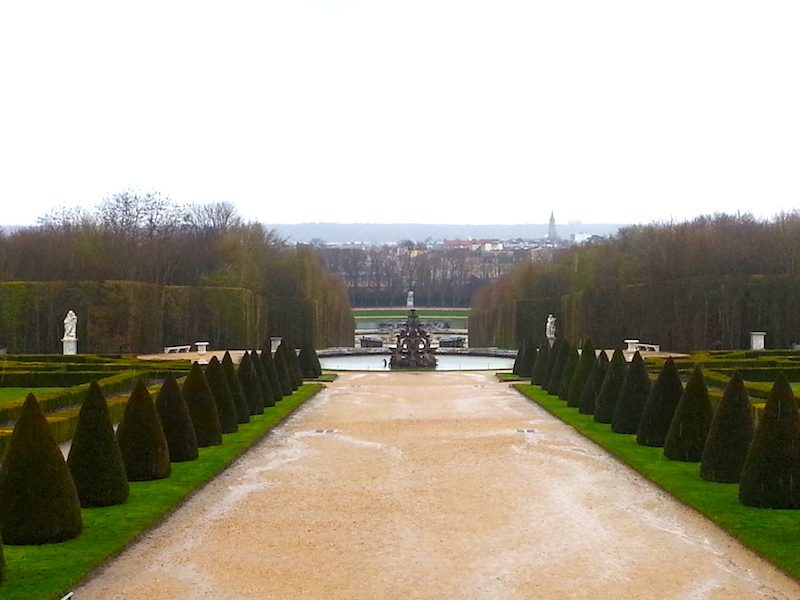
The Bassin de Neptune on a rainy day in late March, 2016.
The layout of the gardens as we see them today, then, is still more or less as it was at the death of Louis XIV in 1715. Plants are living things, however, and though some live long, none are eternal. According to ‘The Gardens’ page on the Château’s official website, it was understood from the start that the gardens would have to be replanted once every hundred years or so.
Fast forward to the reign of the Sun King’s great-great-great grandson, Louis XVI. Following his accession in May, 1774, the youthful king — only 19 at Louis XV’s death! — began to consider undertaking the vast labour of replanting the gardens. The plan below gives an idea of the gardens’ size.
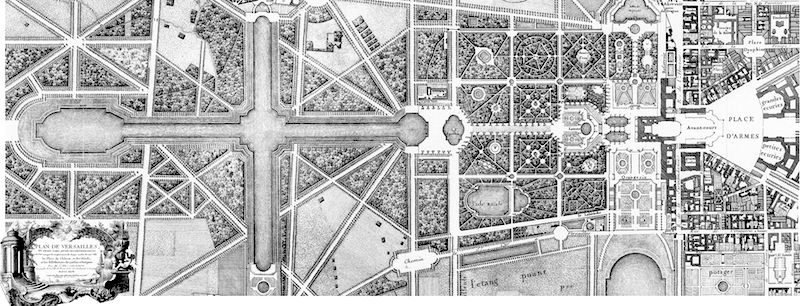
By Jean Delagrive – Bibliothèque nationale de France, département Cartes et plans, GE DD-2987 (834 B), Public Domain, https://commons.wikimedia.org/w/index.php?curid=1337256
The work duly began in the spring of 1775 and was completed in 1777. According to Wikipedia, some thought had been given to re-designing the gardens in the newly fashionable English style, but this idea was abandoned.
While I was wandering through the Gulbenkian Foundation’s museum in Lisbon a few weeks after my visit to Versailles, I stumbled on 2 views of the replanting work by the painter Hubert Robert (1733-1808). I had been aware that Robert was admired as a landscape painter, but I was surprised to discover that he also worked as a garden designer. Notably, he worked on Marie-Antoinette’s hamlet at the Petit Trianon. He also did some re-designing in the gardens of Versailles during the replanting.
The first of Robert’s views is of the Bosquet des Bains d’Apollon.
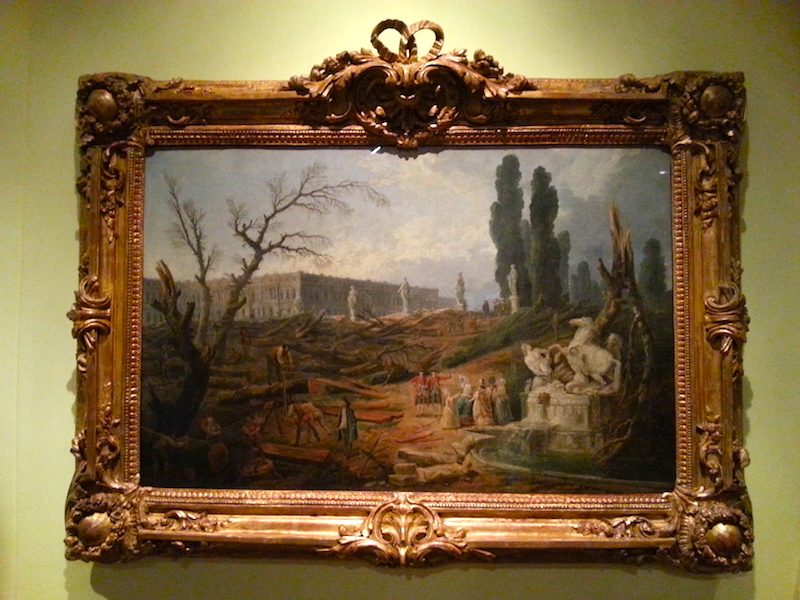
Le Bosquet des Bains d’Apollon by Hubert Robert, 1775-1777, now in the Gulbenkian Museum in Lisbon.
We can clearly see the old trees being felled and removed. The work is observed by a party of ladies. This bosquet had been created in 1705 as a new home for the statuary that once graced the Grotto of Thetis. Robert remodelled it as a grotto during this replanting.
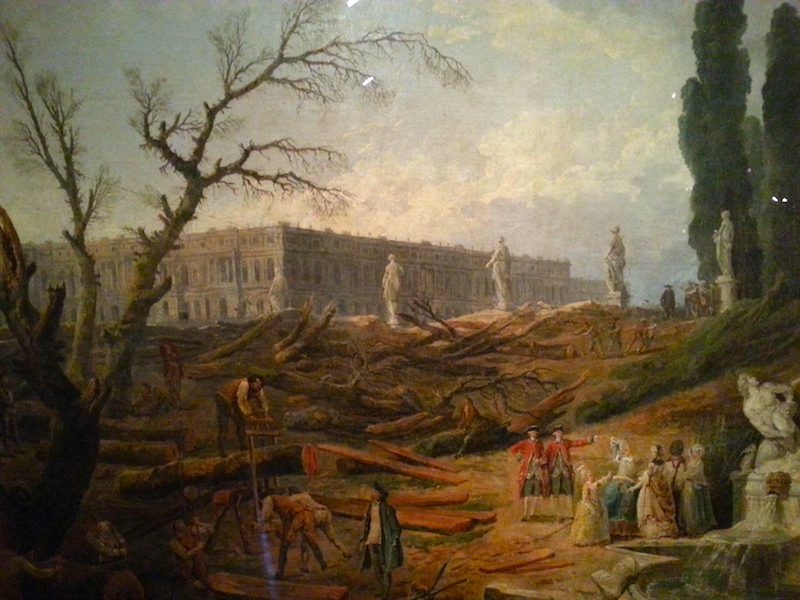
Detail of the above.
The second view is of the Tapis Vert, the expanse of lawn between the Bassin de Latone and the Bassin d’Apollon.
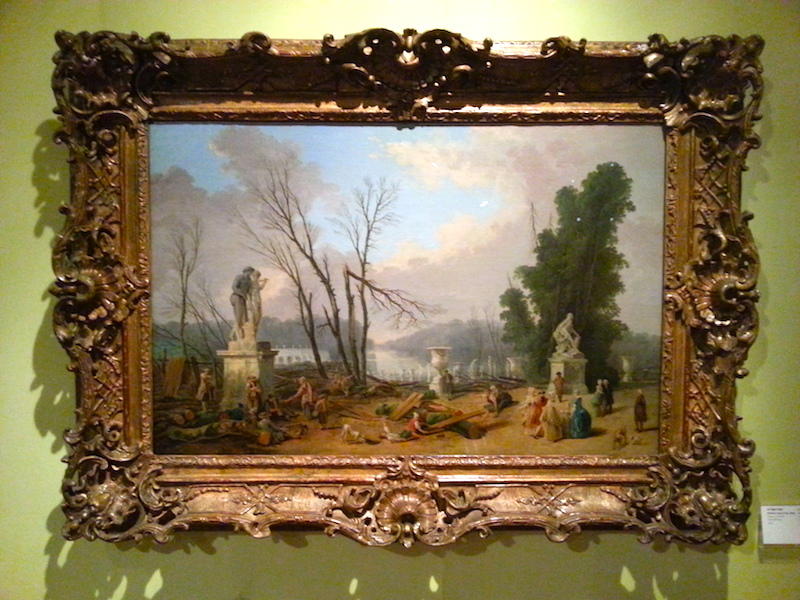
Le Tapis Vert by Hubert Robert, 1775-1777, now in the Gulbenkian Museum in Lisbon.
The Grand Canal is clearly visible in the background. Some labourers have thrown a plank over a log and are using it as a swing.
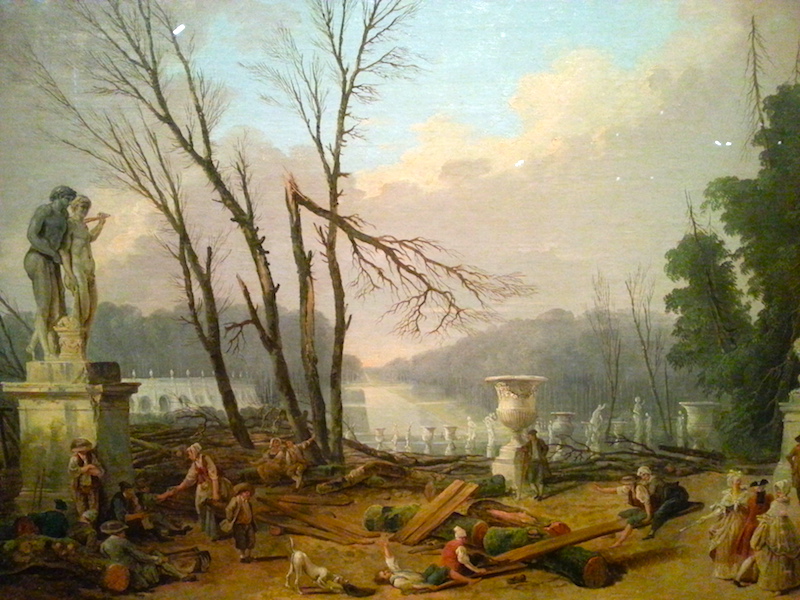
Detail of the above.
Although the Château was never lived in again after the Revolution, the gardens were looked after. Another major replanting was carried out in 1860, and another one after the terrible storm of December, 1999. The trees and other plants we see in the gardens today are therefore young and vigorous.
What is your favourite part of the gardens? Please share in the comments below, on our Facebook page, or in our gallery on Instagram (@versailles_century).








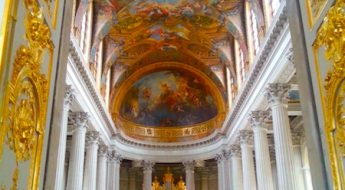









Leave a Comment